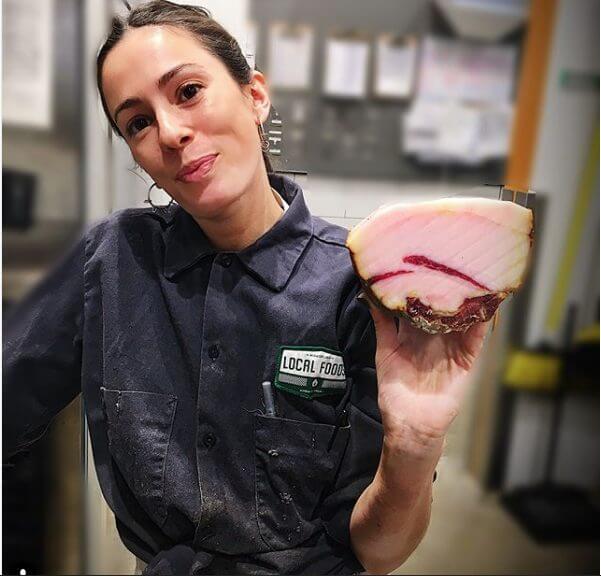Tell us a bit about yourself and what you do
My name is McCullough Kelly-Willis, I’m a whole animal butcher and advocate for responsibly raised meat. I currently run the Chicago Meat Collective, an educational organization that offers classes and events centered on whole animal butchery, meat cookery, and supporting local agriculture. For the past two years we’ve also participated in farmers markets around Chicago, selling cuts of meat, sausage, beef jerky, bone broth and more made from locally sourced animals that we receive whole and process ourselves.
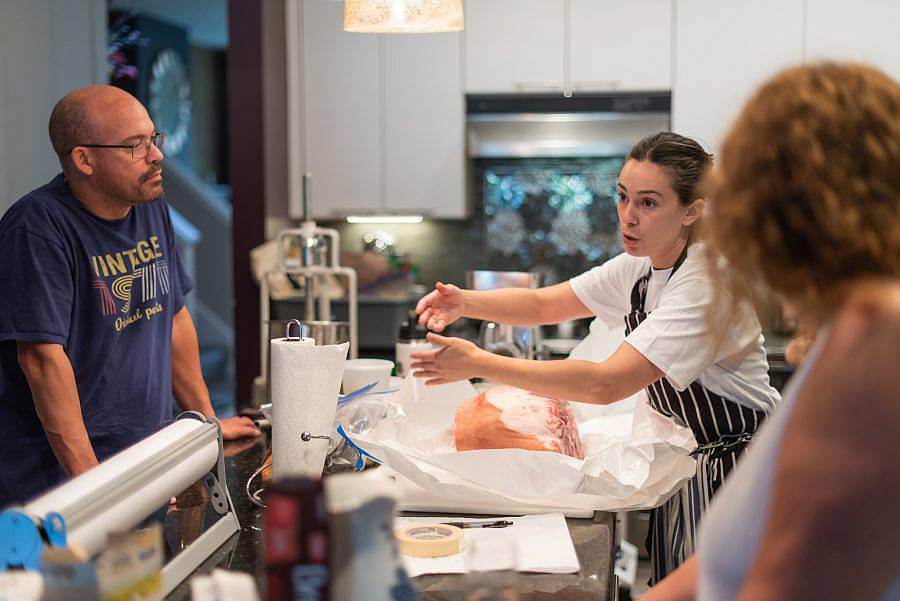
How did you get into butchery?
My first exposure to the concept of whole animal butchery came about when I was in college in Portland, OR. Meat was always part of our diets when I was growing up, and once I was living away from home I realized I had a lot of questions about the best way to buy meat for myself. After doing some research, I found the Portland Meat Collective and took a hog butchery class with them. The PMC founder, Camas Davis, taught the class and spoke to the differences in animal welfare, environmental impact, and nutritional value between conventionally raised meats in America and meat from animals raised by farmers who are operating on a smaller scale and focusing on sustainability. I was hooked. After graduating and moving to Chicago, I was lucky to find the Butcher & Larder, and even luckier that they allowed me to pursue an informal apprenticeship. I worked one or two days a week as a “stage” or intern of sorts and was eventually hired.
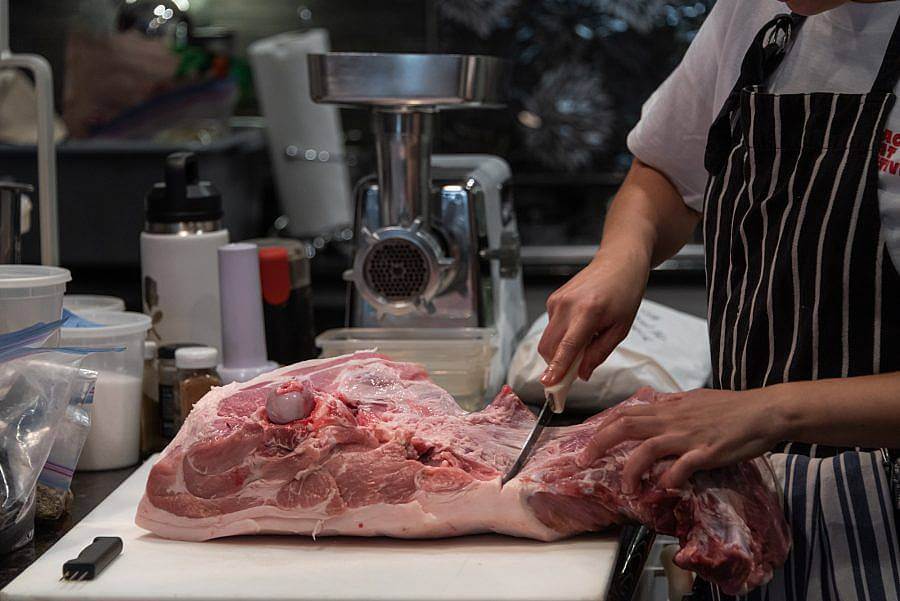
Can you talk a bit about sustainability in the meat supply chain and how your business model works with that?
Sustainability needs to be considered from a few different perspectives – are the animals being raised in a way that has a negative or a positive environmental impact (here we’re usually looking at greenhouse gas emissions, predominantly methane from manure, and as well as water usage, carbon emissions from transportation, running processing plants, etc., and finally land usage and health – concerns being deforestation, soil health, etc.)? Are the people who work in this sector given access to sustainable careers, benefits, and safe working conditions? Is the product being sold accessible, nutritious, and effectively providing our population with quality sustenance?
Broadly, the conventional meat market fails on all counts. The CMC works with farmers who are using regenerative agricultural practices, taking their animals to smaller processing plants, and in many cases working towards connecting with their customers directly, rather than through large aggregators and distributors. Our primary role is to advocate for those farmers and their products. We help convey their value and worth through connecting potential customers – the curious and engaged groups that sign up for our hands-on classes – with the meat. Through the transformation from carcass to steaks, chops, roasts, sausage, and more, the participants tangibly experience part of the process that usually happens far out of sight.
The retail side of our business was born in response to the impact of Covid-19 on the meat supply chain. While the bottlenecks have subsided, conventional meat prices remain high while the quality of the product remains low and the issues of sustainability are unaddressed. The alternative agriculture systems we interact with also face big challenges – among them are the scarcity of small slaughterhouses, labor shortages, and the rising cost of grain, but they have been resilient, and I think there’s a lot of potential at the moment for change. I’m seeing renewed support for sustainably raised meat, and I’m also inspired by the progress I’ve seen around small farmers building their direct-to-consumer business.
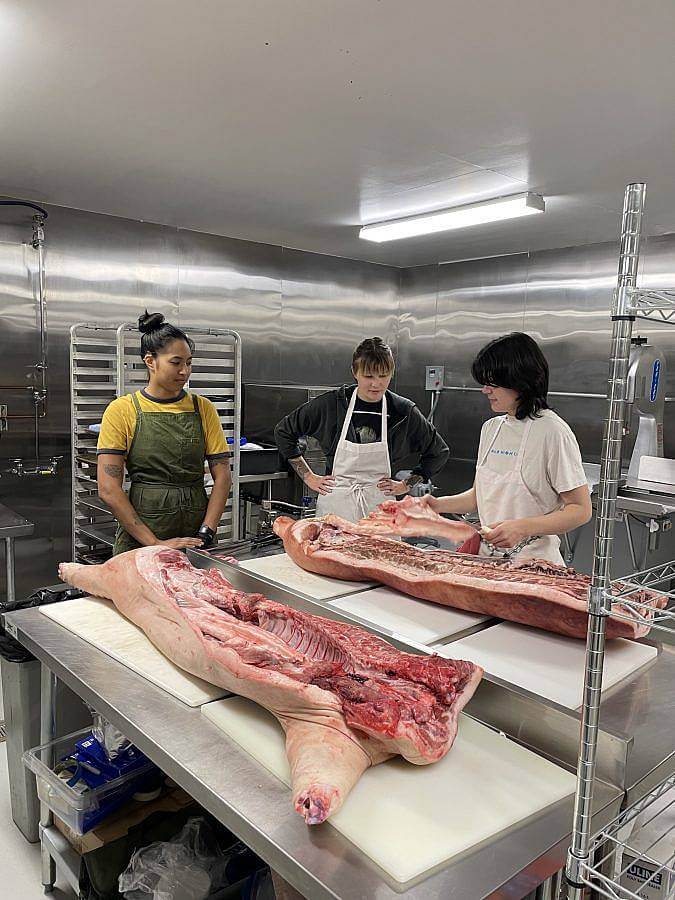
Why is it important for people to know where their meat comes from?
I think that all issues of sustainability and environmental impact have to be looked at both from the big picture perspective and that of the individual consumer. When it comes to fighting for better climate outcomes and a healthier food system, I think the individual’s role is often overemphasized in a way that de-emphasizes just how powerful and problematic conventional agriculture is. That said, there is so much to gain from learning more about your meat, or any other food you’re consuming. Food is so powerful, and it’s one of the few places in our lives where we have a lot of control to make decisions that really positively affect our health and our community. I think cost and access tend to be the biggest barriers, and they are very real. But I also think that learning more about where your meat comes from can open doors to more direct connections to the product, better prices via farms who deliver, CSA’s, or meat shares, and a better understanding of the value of well-raised meat. I’m excited about the expanding practice of families or groups within communities buying larger pieces of meat or whole animals together, and I hope we see that continue to gain steam.
What should people expect to take away from a class at CMC?
We hope that people will come away from our classes with an appreciation of the work, time, and skill that goes into turning animals into food. They will also get to take that food home – in all of our hands-on butchery classes the meat we work with during class goes home with the participants in equal shares. I’ve been really happy to see our customers forming new friendships and connections amongst themselves, and I think a CMC class is a great way to meet people who are passionate about food, supporting sustainable agriculture, and don’t mind getting their hands dirty.
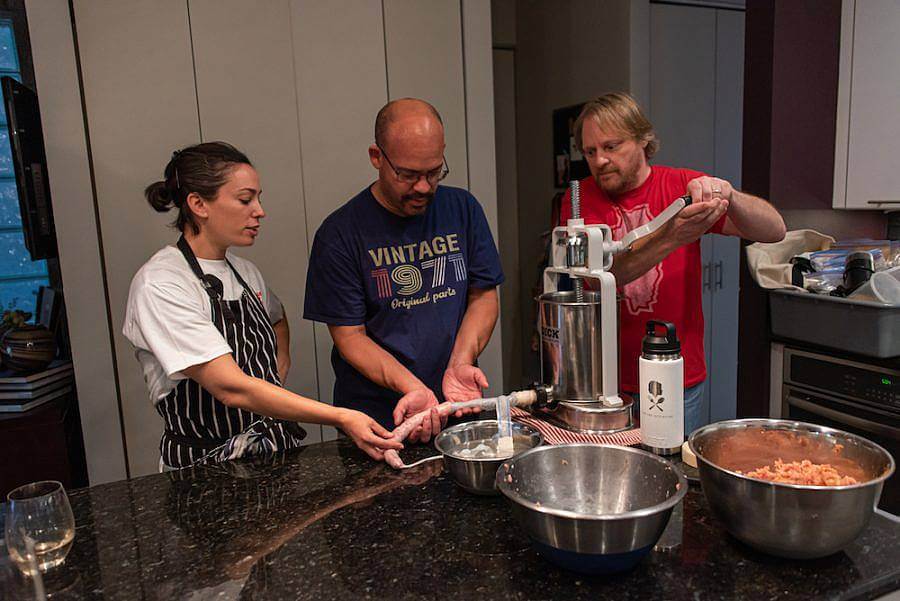
How do you deal with food waste?
Having worked with whole animals throughout my butchery career, I’ve always taken an approach to sourcing, production, and class design that minimizes waste as much as possible. In the class setting, we break down the animals in ways that maximize our yields, and we send participants home with bones, fat, and offal along with muscle meat. We always check in with our participants at the end of class to make sure we aren’t saddling anyone with cuts or items they don’t feel confident or interested in utilizing. Luckily we’ve generally had several people in each class who are interested in working with offal, have dogs to feed, are excited about getting into making stock/bone broth, or are already pros!
On the retail side, the products we offer are designed to help us utilize the whole carcass, and we’ve developed these products over the last year with that in mind. Last spring/fall (2021) was our first season, and we had a lot of fun responding to customer’s needs and wants, while looking at our inventory and saying, ok what isn’t selling, should we cut it differently, do we need to repurpose it, etc. Some of my favorite products were born that way.
How does a meat collective work?
The Portland Meat Collective, founded in 2009 by Camas Davis, was the inspiration for the structure of the Chicago Meat Collective and for several other meat collectives around the US. I consulted with Camas when I was looking to start the CMC in 2018, and she has also created a guide to starting a meat collective that’s available to anyone who’s interested.
That said, all the meat collectives I know of operate a bit differently, given their founders backgrounds, skill sets, priorities, and the interests of the communities they serve. All the meat collectives I’m familiar with share a commitment to supporting local meat producers and connecting their communities to those farmers. What drew me to the structure that Camas was using in Portland was the way classes combined facilitating a group to buy and break down a whole animal from a local producer with providing an educational experience. That is still the core structure of most of our classes.
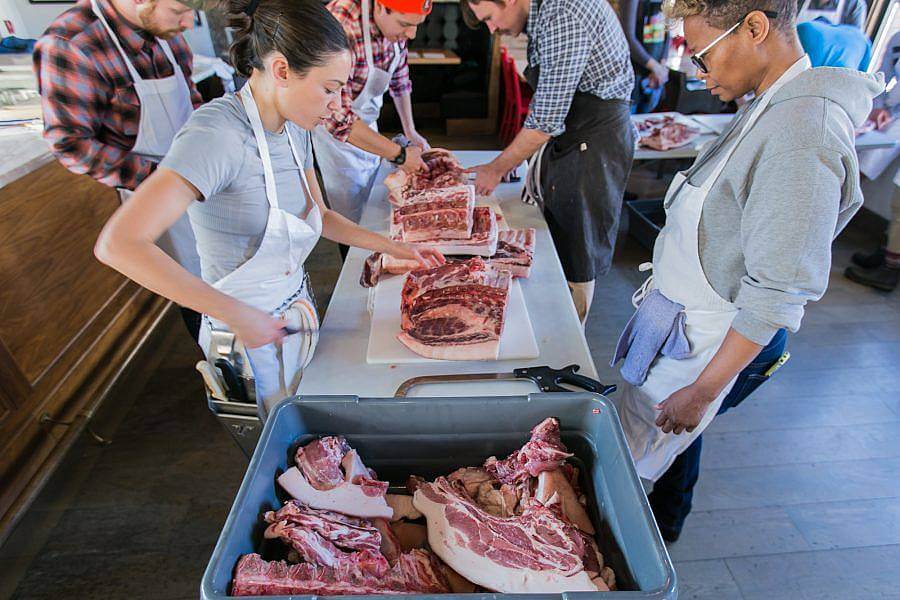
What have you been listening to?
Currently oscillating between Rosalia and Bob Dylan.
What are some underrated cuts of meat that you think should be more utilized?
I have long loved shanks and ribs, and while everyone goes for baby backs and short ribs, there are so many other good rib cuts that don’t get as much love, like pork country ribs from the shoulder, beef back ribs from the rib primal, and lamb spare and country ribs. I think shank meat makes the best braise, and I love them from any animal. I also want people to cook with more animal fat and stock/bone broth. We render fat from beef, pork, and lamb, and sell pure pork lard, pure beef tallow, and pure lamb tallow to whomever will buy them. Pork lard can be used in place of butter or olive oil, it has a neutral flavor and is good for you! Beef tallow is my favorite frying fat, and I love it for greasing up my tortillas whenever I make tacos at home. I try to avoid being dogmatic about food, but if I could share one imperative it would be stop buying vegetable oil…lol. As for broth, it’s nutritious, comforting, versatile, and miraculous. It is bone water! That’s so hard core. When I started working with meat, bone broth was having its first big wave of popularity and we were all rolling our eyes because stock and broth have been around forever and it was annoying to see this sudden interest because of the “bone broth” rebrand. But now I embrace it because I’m just so happy to see people drinking and using broth at home.
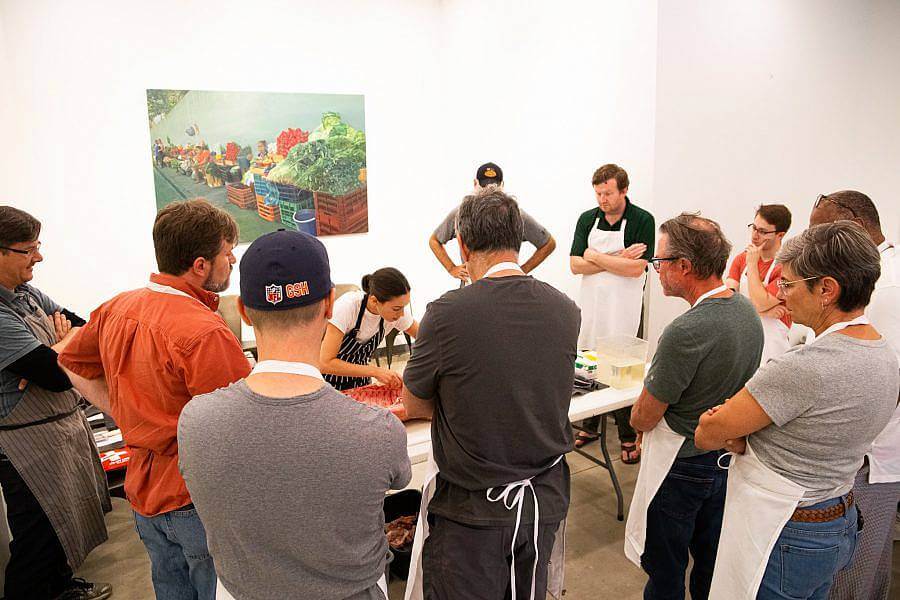
What are your priorities as an educator and what kind of pedagogy do you feel you work within?
My hope for the work I do through the meat collective is that it fosters people’s curiosity and provides them with real next steps to accessing better meat. At their best, classes feel a bit like lifting a veil or raising a curtain, bringing people into connection with something that is generally out of reach. It’s rewarding to see people forming a new understanding of their food by simply having the kinesthetic experience of cutting a pork chop by hand and visually connecting the whole carcass to the products they see at a butcher shop or grocery store. The classes have become really fun to teach as I’ve learned that my role is really just to guide the students as they interact with the primal or whole animal that’s in front of them. As I’ve taught more of these classes, I’ve learned how helpful it is for me to cue students to get in touch with their senses as they try to do something that’s typically foreign to them. We talk a lot about listening to the differences between the sound of the knife on bone, cartilage, fat, muscle, and the most frequent direction I give is for people just to slow down and actually look at and feel out what they’re doing. Our classes are open to all levels of experience, and in general we get people who love to cook at home or are working on getting better at it, though we also get some hunters looking to improve their skills, as well as people who do competition barbeque or have generations of sausage making in their family. The coolest thing about the classes is that they attract engaged and open-minded people who are putting their faith in us to teach them something, which is a true privilege for me.
Do you have any upcoming projects you can share?
Upcoming CMC Class Schedule :
https://www.chicagomeatcollective.com/upcoming-events
Good Meat Project Website : (resource for finding good ranchers, farmers, other meat collectives, etc.)
Interview Conducted by Milo Christie
